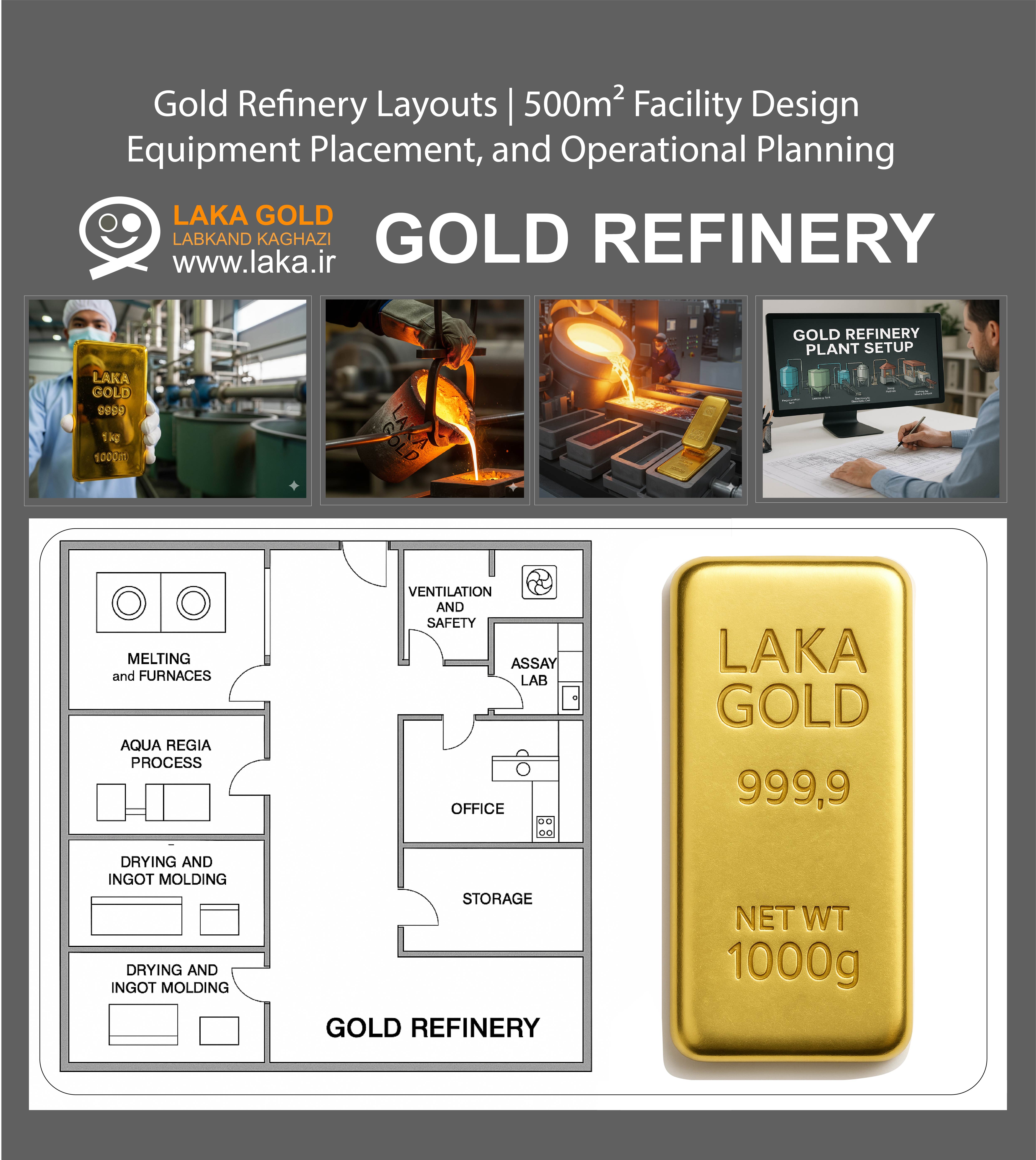Gold Refinery Project & Investment Opportunities
Introduction
The Gold Refinery Project is one of the most profitable and stable industrial investments in the field of precious metals.
By refining raw or semi-pure gold into high-purity bullion, investors can gain access to both domestic and international markets, while also contributing to economic transparency and value creation.
Gold refining is not only a technical process but also a strategic gateway between mining, trade, and global certification markets such as LBMA (London Bullion Market Association).
What Is a Gold Refinery?
A gold refinery is a specialized industrial facility designed to purify gold from various sources — including mined concentrate, recycled materials, jewelry waste, and semi-pure bullion — into 99.99% pure gold bars that meet international standards.
Main Inputs:
- Gold concentrate (from mines)
- Scrap jewelry and electronic waste
- Semi-refined or low-grade bullion
Final Outputs:
- LBMA-certified gold bars (99.99%)
- Silver, platinum, and palladium byproducts
- Refined gold granules for industrial use
Global Market Overview
The global gold refining industry is estimated at over USD 250 billion annually, with major players located in:
- Switzerland
- Italy
- UAE (Dubai)
- Turkey
- India
- China
However, in Central and East Asia, including countries like Mongolia, Kazakhstan, and Iran, the number of internationally certified refineries is still very limited — creating a golden opportunity for new investors.
Why Invest in a Gold Refinery?
-
High Profit Margin:
Refining adds up to 10–20% additional value to raw gold compared to selling it unrefined. -
Fast Return on Investment (ROI):
Depending on production capacity and location, ROI typically ranges between 18 and 36 months. -
Global Trade Access:
Certified refineries can legally export gold bars to the LBMA or equivalent markets. -
Economic Transparency:
Refinery operation ensures traceability, compliance, and anti-smuggling regulation. -
National and Regional Value Creation:
Developing local refining capacity reduces dependency on foreign refiners and increases internal economic growth.
Refinery Production Capacities
| Type | Daily Capacity | Typical Use | Notes |
|---|---|---|---|
| Laboratory Refinery | up to 5 kg/day | R&D, testing, training | Suitable for universities or pilot projects |
| Semi-Industrial Plant | 5–50 kg/day | Commercial refining | Medium investment, fast ROI |
| Full Industrial Refinery | 50–500 kg/day | Large-scale operations | Requires international certification |
Required Equipment (Standard Setup)
- Gold Melting Furnace
- Acid Dissolution Reactors
- Precipitation and Neutralization Units
- Filtration & Drying Systems
- Electrolysis System (Aqua Regia or Electro-Refining)
- Final Casting and Hallmarking Station
- Laboratory for Assay and Purity Control
- Dust & Gas Treatment Units (Environmental Compliance)
Environmental and Safety Standards
All modern gold refineries must comply with international environmental regulations such as:
- ISO 14001 (Environmental Management)
- ISO 45001 (Occupational Health & Safety)
- REACH and RoHS compliance (chemical safety)
Advanced systems include acid fume scrubbers, water recycling systems, and waste management plans to minimize ecological impact.
Refining Methods
| Method | Description | Purity Level | Application |
|---|---|---|---|
| Aqua Regia | Chemical method using nitric & hydrochloric acids | up to 99.99% | Medium-scale operations |
| Electrolysis | Electrochemical separation method | up to 99.999% | Industrial-grade refining |
| Miller Process | Gas-based chlorination process | up to 99.5% | Initial stage before fine refining |
| Wohlwill Process | Electrolysis with gold chloride electrolyte | up to 99.999% | High-end LBMA standards |
Project Implementation Steps
- Feasibility Study & Market Research
- Preliminary Design & Equipment Selection
- Construction & Installation
- Operator Training & Commissioning
- Quality Certification (Local & International)
- Branding & Export Registration
Example of a Typical Investment Plan
| Phase | Description | Duration | Estimated Cost (USD) |
|---|---|---|---|
| Phase 1 | Feasibility & Design | 2–3 months | 50,000 – 100,000 |
| Phase 2 | Equipment Procurement | 3–4 months | 500,000 – 3,000,000 |
| Phase 3 | Construction & Setup | 4–6 months | 1,000,000 – 5,000,000 |
| Phase 4 | Certification & Operation | 2 months | 50,000 – 200,000 |
 Total Average Investment:
Total Average Investment:
$2M – $10M depending on refinery capacity and automation level.
Key Financial Indicators
| Parameter | Value Range | Remarks |
|---|---|---|
| Profit Margin | 8% – 25% | Depends on raw gold purity and yield |
| Payback Period | 18 – 36 months | Based on throughput and gold price |
| OPEX Ratio | 12% – 18% | Operating expenses relative to revenue |
| CAPEX | $2M – $10M | Initial investment including equipment and facilities |
Web : www.laka.ir
Email : This email address is being protected from spambots. You need JavaScript enabled to view it.
Tel : +985137665005
Management:Mr. Alireza Sistanizadeh Aghdam
-Sample Gold Refinery Contract Download PDF & Word - Mobile






